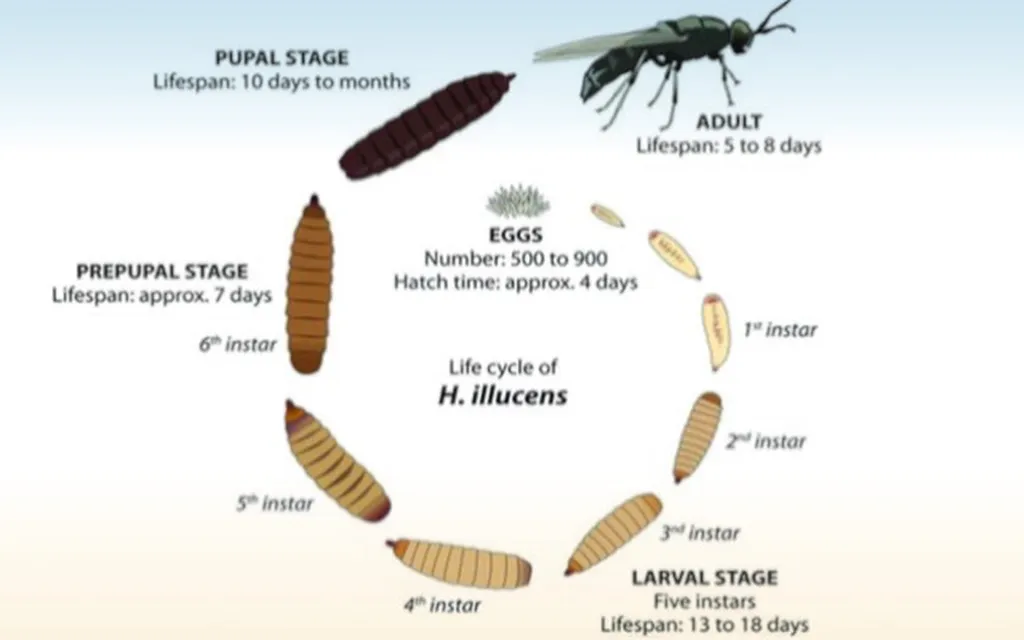In the quest for sustainable and cost-effective animal feed solutions, a promising contender has emerged from an unlikely source: the black soldier fly. Researchers, led by Ishaya Usman Gadzama from the School of Agriculture and Food Sustainability at the University of Queensland and the National Animal Production Research Institute at Ahmadu Bello University, have been exploring the potential of black soldier fly larvae (BSFL) as a viable alternative to traditional feed sources. Their findings, published in the journal *Животновъдни науки* (translated as “Animal Science”), offer a glimpse into a future where waste is transformed into high-quality animal feed, potentially revolutionizing the livestock industry.
The black soldier fly, Hermetia illucens, is not your average pest. Its larvae are packed with nutrients, including protein (ranging from 8-60% dry matter), fat (18-40% dry matter), essential amino acids, minerals, and lauric acid, which has antimicrobial properties. The nutritional content of BSFL varies depending on what they’re fed, making them a versatile option for animal diets. “The beauty of BSFL is that they can convert organic waste into high-quality biomass,” Gadzama explains. “This aligns perfectly with the principles of a circular economy, where waste is minimized, and resources are used efficiently.”
The implications for the animal agriculture sector are significant. With the global demand for animal protein expected to double by 2030, the industry is facing a substantial feed gap. BSFL farming offers a sustainable solution, reducing reliance on conventional feed sources like fish meal and soybean meal, which are not only costly but also environmentally impactful. Incorporating BSFL into livestock diets has already shown improvements in growth performance, feed efficiency, and product quality. “We’re seeing positive results across various livestock species,” Gadzama notes. “This could potentially enhance animal welfare as well.”
However, the journey towards widespread adoption is not without its challenges. More research is needed to fully understand the effects of BSFL supplementation on animal responses and to optimize their use as a replacement for conventional feed sources. Gadzama and his team are at the forefront of this research, aiming to develop more sustainable and efficient livestock production systems.
The potential commercial impacts are substantial. For the energy sector, this could mean a new avenue for waste management, turning what was once considered refuse into a valuable resource. It could also open up new markets for insect protein, creating a more diverse and resilient food system. As Gadzama puts it, “This is not just about feeding animals; it’s about creating a more sustainable future for us all.”
In the coming years, we can expect to see more innovations in this space, driven by the urgent need for sustainable solutions. Gadzama’s research is a testament to the power of interdisciplinary collaboration, bringing together experts from agriculture, food sustainability, and animal production to tackle one of the most pressing challenges of our time. As the world grapples with the realities of climate change and resource depletion, the humble black soldier fly might just hold the key to a more sustainable future.

